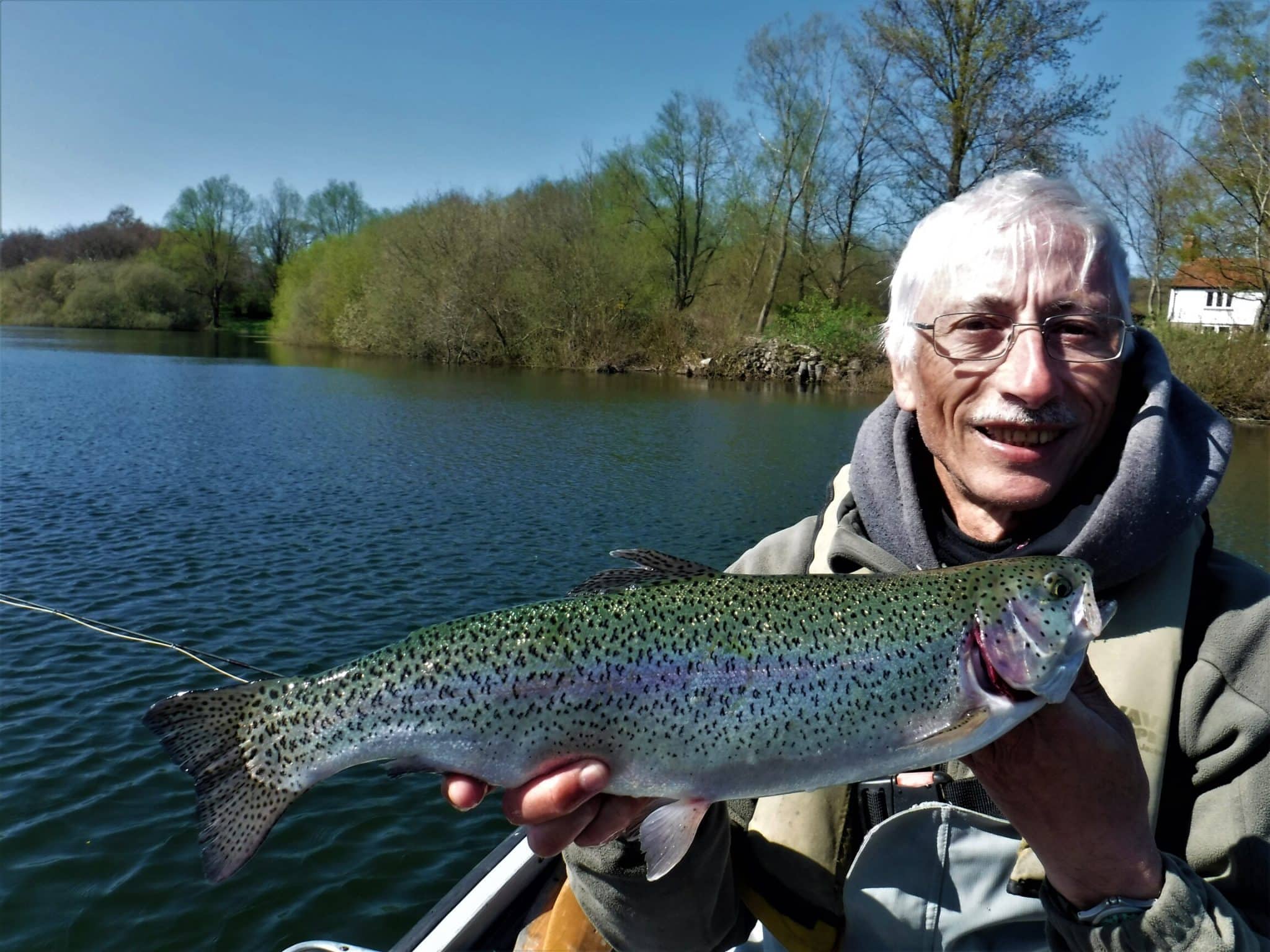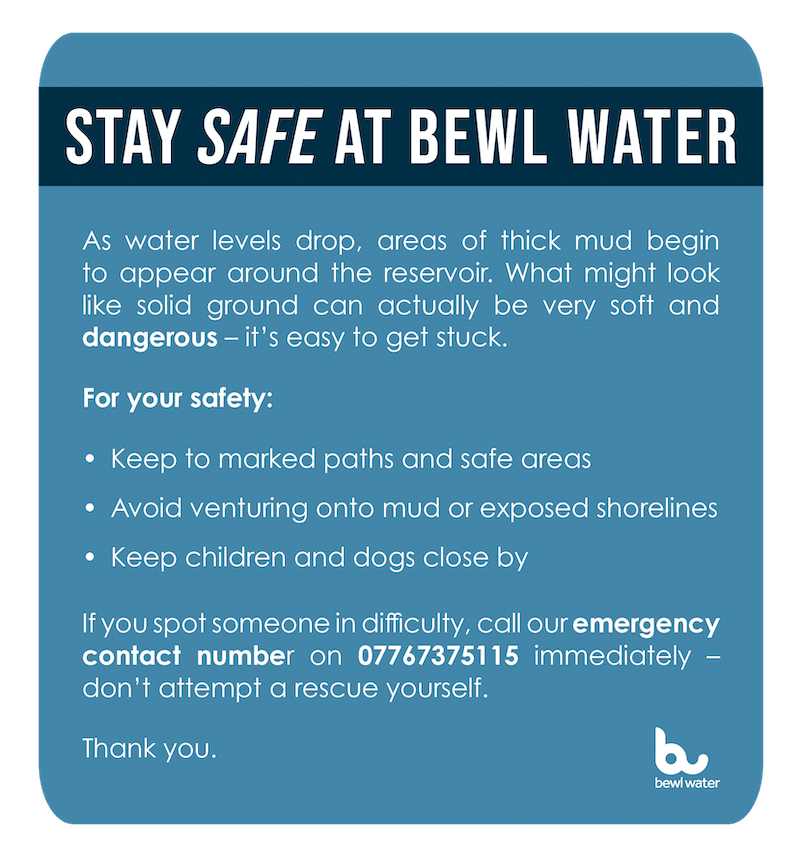Each year, thousands take to the rivers and lakes to fish. Fishing, as a sport or for leisure, is an incredible way to enjoy the great outdoors. When you are fishing in the early season, it requires a unique approach. In order to catch as many fish as possible, there are certain techniques that you can use to increase your catch.
Where to start?
When fishing in Bewl (or any other water for that matter) during April, I would suggest you head for the downwind banks first. I’ve always found fish to be very close to these banks, feeding on the larvae and nymphs of the flies that will be hatching during the following months.
Bank Fishing
When I am bank fishing, a tactic I often use is casting directly into the wind. This can be an effective method to cast a wide net as this will search a variety of depths, but I would expect most fish to be feeding within a rod’s length of the bank most of the time. In fact, if it’s possible to cast at 45 degrees across the wind without interfering with other anglers, then I will generally use this method. Casting my line at this angle is a fantastic way for me to maximise my catch, as my flies will travel through the most productive fishing area for longer.
When using this technique allowing your floating line to swing into the margins is very natural and effective, remember slow and low retrieves work best early season. If the day has very windy conditions, employing a ‘midge tip’ or ‘sink tip’ which have a sinking section of between 6ft or 12ft, will slow the “drift speed” of the line and help maintain your flies depth. When fishing this early in the season your flies should be as close to the bottom as possible while still preventing any snagging!
Peter Cockwill displays a super Bewl Rainbow.
Plan B
If your flies keep snagging the bottom, or keeps getting covered in water weeds then it’s a good idea to approach the situation from a different angle. Now is the time to get down & dirty by fishing two Boobies on a Di7 with a short 6ft – 8ft leader. When you choose to use this method then your top dropper fly should be 2ft from the tip of the fly line; this will catch any fish that are tight to the bottom, while the point fly will grab the attention of any passing fish that are patrolling the margins. These buoyant flies will be drawn towards the bottom when you retrieve and will slowly rise on the pause. The other important factor is you can fish slowly, and very effectively using this method.
An early season ‘grassy’ shoreline hotspot.
Boat fishing
Boat fishing is a fantastic way to try altering your fishing methods for a day. Fishing from a boat allows you to cast your line from a different angle to gain a bigger catch. When boat fishing the fish will still be found in the same places, but you’ll be approaching them from up-wind. I find it best to anchor up and cast towards any grassy banks with the wind blowing onto them!
I prefer to fish the shallow end of Bewl at the beginning of the season, this means heading down ‘Bewl Straight’ towards the ‘Rosemary Lane Dam’. ‘Dunster’s Bay’, ‘Goose Creek’ and ‘Tinkers Marsh’ are traditionally all productive spots but are very busy early season. If you fancy a bit more room then consider trying ‘The Nose’, ‘Seven Pound Creek’ or ‘The Children’s Playground’, these all offer shallow gentile slopes into deeper water.
Early season buzzer muncher.
Remember to give the bank anglers plenty of room, stay at least 50m away from them. It’s far easier to move spots in a boat than when on foot, so please be considerate.
Tactics
I start by anchoring up, as this allows me to fish right into the shallow margins effectively. While boat fishing it is best to do everything at a slow pace, to prevent disturbing the water too much. My first-choice of line will be a floater, if at all possible, but if the wind’s too strong then I will use either a 6ft ‘Midge tip’ or the 12ft ‘Predator sink tip’. My opening gambit is to fish a team of three flies, usually a mixture of Buzzers, Diawl Bachs and Crunchers in size 10 or 12.
Early season selection – Blobs, Diawl Bachs, Hoppers & Cormorant.
It is a big mistake to fish with light leaders at this point in the year. Do not use anything less than 3X diameter, depending on the brand of Fluorocarbon this can vary in strength from as little as 6lb up to as much as 9.5lb [Seaguar Grand Max]. If you intend on fishing with droppers then I recommend 2X diameter, 12.5lb in Seaguar Grand Max. I know this sounds brutal but ‘double ups’ are common when fishing for trout at this time of year.
At the beginning of the day, it is a good idea to fish a team of flies with a sacrificial point fly. Having a weighted point fly creates a steep angle in your leader which will see each fly searching a different depth. Ensure you keep track of which fly position is producing the most fish. This will in turn tell you what depth band to focus on. Depending in which fly position is most successful you will know what flies or fly line you should change to. Changing fly lines like this will help you to catch more fish quickly. Although I prefer not to use weighted flies for my boat fishing, lightly weighted Montana, Cats Whisker or Damsel Nymphs are ideal for this tactic.
Early season selection – Heavy Buzzers, Diawl Bachs & Leader Rings for droppers.
Method
The fish are very lethargic at this time of year so it is easy to miss a take if the fish do not pull on the line, so fish slowly and watch your fly line for any signs of a take. If it’s not too windy, angle your casts across the wind and let it swing with the current. If you do not locate fish on your first spot, move no more than 100yds along the bank. Move every hour until you find fish, do not move too far each time as the fish are likely to be shoaled up in tight spots and you could easily bypass them.
Be sure to remember that location is more important than fly choice. After that, it’s the depth and speed of retrieve. It is important to remember to count your flies down after each cast, before you start your retrieve. In this way you can search the water column for fish from top to bottom. Once you’ve caught your first fish, it’s just a matter of repeating the same countdown and retrieve. Another very important tip for this method is to hang your flies for a few seconds at the end of each retrieve before lifting off to start your next cast. Takes on the hang can be very subtle and are very rarely felt. Watch the tip of your fly line and then the leader as you gradually lift the rod from the surface to the 10 o’clock position. Now pause, the colder the weather the longer the pause, or hang. Takes are indicted in several ways, often the line looks too tight or the angle is too steep, if in doubt STRIKE!
You will catch a lot of extra fish using this technique wherever you’re fishing, whether in a boat or off the bank, fishing in reservoirs or lakes.
Tight lines
Andy Lush
Andy Lush with an early season Bewl Rainbow.
About Andy Lush
Andy Lush is a very experienced fly fisherman and predator angler. Living in the south east of England, Andy regards Bewl Water as his home water, having spent almost a lifetime fishing there for Trout on the fly and Pike and Perch on artificial lures.
Andy is very well known locally, having spent over forty years selling fishing tackle from his shop ‘The Friendly Fisherman’ in Tunbridge Wells. In fact, to many anglers Andy is known as “The Friendly Fisherman”.
Having spent over forty years fly fishing many stillwaters and reservoirs in England for Trout, Andy has pioneered “dry fly” fishing for Iberian Barbel on several huge reservoirs in Spain over the past fifteen years. Andy’s enthusiasm for fly fishing knows no bounds, as many ‘Fly Dressers’ guilds can testify after attending one of his informative talks.
Andy is also a very experienced predator angler, fishing for Pike, Perch, Catfish and more recently Zander in the U.K. Having achieved success fishing a variety of waters, Andy is best known for his exploits while boat fishing on Trout reservoirs in Southern England.
Andy has fished in Canada, North America, Ireland, Scotland, France, Holland and Spain catching Pike, Perch, Walleye, Zander, Lake Trout, Salmon, Sturgeon, Small Mouth & Large Mouth Bass, Alligator Garfish, Channel & Wels Catfish, Musky, Comizo Barbel, Aspe, Ide, Tarpon, Bonefish and Barracuda.
Andy Lush offers a guiding service for those who want to learn more about “Lure Fishing” & “Fly Fishing”. To book a day email info@thefriendlyfisherman.co.uk with your contact phone number and Andy will call you back and discuss details.


